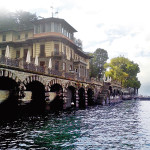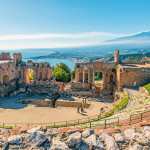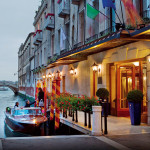The Peak District Is One of England’s Best-Kept Secrets
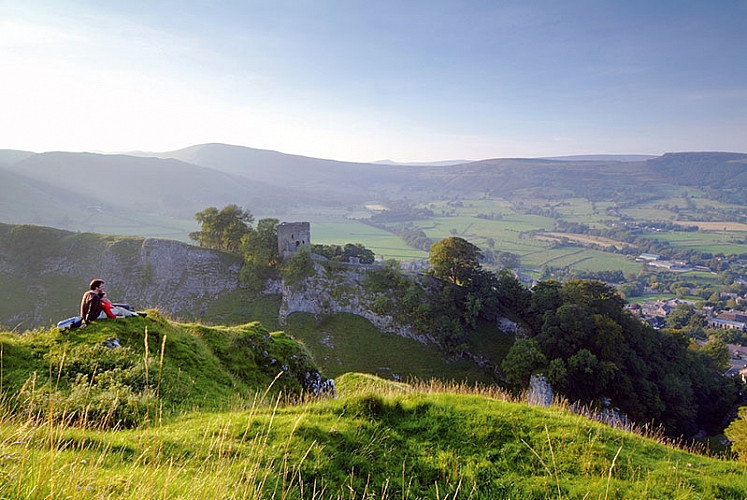
My only regret is not having stumbled upon the Peak District earlier. With its stunning landscape, medieval architecture and mouth-watering cuisine, it’s a crying shame that Indian tourists are virtually ignorant of this rural paradise within easy access to many big cities in the United Kingdom — Leeds and Bradford to the north, Manchester to the west, Sheffield to the east and Birmingham to the south. Lured by the strong advertising pull of the Lake District and their romantic association with English poets such as William Wordsworth, the Peak District has remained a hidden gem waiting to be discovered….
As the coach pulls into the driveway of The Cavendish Hotel — a handsome and spacious inn dating back a few hundred years, the sound of telephones and gadgets buzzing at the reception desk is replaced by the sound of sheep bleating in our ears…. Finally a slice of tranquility, as we leave the noise of a big city behind — only fields upon fields and wooded hills in the horizon as a nip in the air (2 degrees Celsius in May) makes us pull our hoods a little tighter over our heads as we get ready to head off to the moors for a bracing walk amid some of Britain’s wildest, most stunning landscapes.
Historical nuggets
Nestled in the county of Derbyshire, the Peak District was named UK’s first national park back in 1951 in a bid to conserve and protect this verdant paradise. Stretching across a designated area of land, the Peak District National Park is 555 square miles (1,438 square kilometres) in size, and covers parts of the counties of Derbyshire, Staffordshire, Cheshire and Yorkshire. Geographically, it is split into two areas — the northern Dark Peak, where most of the moorland is found and the geology comprises gritstone, and the southern White Peak, made of limestone hills where most of the population lives.
One of the unsolved mysteries is how the Peak District got its name, for there are no real peaks to speak of. Valleys, gorges and moorland dominate the landscape instead. The most popular theory is that the region was named for the Pecsaetan, the Anglo-Saxon tribe who once inhabited this section of England.
Walk in the woods
To cycle or walk is the million-dollar question over a breakfast of home-made scones, marmalade and hot chocolate. Indeed it’s a personal choice as on foot or on wheels it’s going to be an arduous challenge. From our hotel in Bakewell (the area’s main town, and the most sensible launch pad for a journey into the Peaks) we set off to pick up our cycles for a short cycling tour on the Monsal Trail from Hassop Station with guide Janette Sykes, a veteran and local of this region. For a rusty cyclist like me, the flat, undulating and easy bike ride, following a former railway line, is a relief because my eyes are glued to the stunning vistas and views along this path. Acres of pastoral land in the greenest of hues are a perfect antidote to weary eyes used to seeing industrialised cities every day.
The walkers in my group are a far more adventurous lot. They decide to scale the unforgiving area of the northern part dominated by the Dark Peak. Its windswept and mist-lined topography, especially along the Pennine Way, meanders north from the tiny village of Edale to the Scottish border.
But fret not; ’cause even if you aren’t a hardened walker wishing to trample up a soaring gritstone boundary or edge, there are plenty of rolling hills (in the southern part of the Peak) dotted with sheep and pastoral herds that offer a gentle, undulating stroll along walking paths and pre-planned trails.
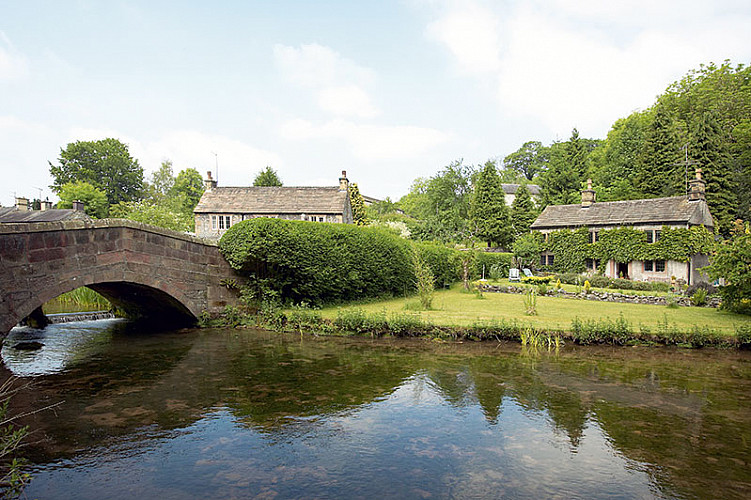
Pudding in the peaks
Bakewell is world-famous (at least in culinary circles) for a confection made by accident way back in 1820 when a cook at the Rutland Arms misunderstood a recipe! According to the legend, visiting noblemen ordered strawberry tart, but the cook, instead of stirring the egg mixture into the pastry, spread it on top of the jam. The result was so successful that a certain Mrs Wilson, who resided in the cottage now known as the Old Original Bakewell Pudding Shop, saw the commercial viability of selling the puddings and the rest, as they say, is history.
So like all tourists we trot off to the Old Original Bakewell Pudding Shop to sample this culinary delight. It is bustling with locals and tourists alike as we partake in a sampling of the rich egg and almond custard nestled on a pastry case served with lashings of cream. Luckily, we have plenty more calorie-busting activities on our schedule to ensure this decadent treat doesn’t move from our lips to our hips.
Crowning glory
We’ve saved the best for the last. Besides the breathtaking natural beauty, over 8,00,000 visitors come to the Peak District to visit Chatsworth House — one of Britain’s most celebrated stately homes. In a country renowned for its palaces and castles, this means a lot. Film buffs may recognise the imposing limestone facade of the home from the magnum opus Pride & Prejudice starring Keira Knightley. Chatsworth, home of the Duke and Duchess of Devonshire since 1550, is set on the banks of the River Derwent and houses a veritable treasure trove of beautiful artefacts, paintings and architecture that tantalises all senses. The Chatsworth estate is spread over 35,000 acres whilst the home is contained in a more modest 1,000 odd acres with 300 rooms to explore — so trust me you need at least a day to do justice to this monument.
Don’t miss the fabulous Painted Hall, the family-used chapel, regal State Rooms and the Sculpture Gallery.
If the Raphaels and Rembrandts don’t stir you, then the gardens definitely will. This 100-acre spectacle with its famous rockery and boundless flower beds is awe-inspiring as is the gravity-fed Emperor fountain which rises to 90 metres. The garden offers magnificent vistas of the 1,000-acre park, designed by ‘Capability’ Brown in the 1760s, and one of the most recognised and historic man-made landscapes in Britain. It is juxtaposed with the rugged backdrop of the rest of this region. All the better, to enjoy the beauty of both.
Related posts from Verve:
Verve Trending
Sorry. No data so far.
us on Facebook to stay updated with the latest trends

